The top chip 'M1 Ultra', which is an ultra fusion of two M1 Max, has appeared, and the memory bandwidth reaches 800GB / s with a maximum of 128GB of unified memory.

At Apple's new product launch event on March 9, 2022, Apple unveiled the top-of-the-line chip, the M1 Ultra , which combines two M1 Max dies. The CPU is 20 cores, the GPU is up to 64 cores, the Neural Engine is 32 cores, the maximum 128GB unified memory & 800GB / s memory bandwidth will be realized as a monster SoC.
Apple Events-Apple
https://www.apple.com/apple-events/
Apple announces M1 Ultra, the world's most powerful chip for personal computers-Apple (Japan)
https://www.apple.com/jp/newsroom/2022/03/apple-unveils-m1-ultra-the-worlds-most-powerful-chip-for-a-personal-computer/
With the advent of the M1 chip, the Mac has undergone a major transformation in a year.
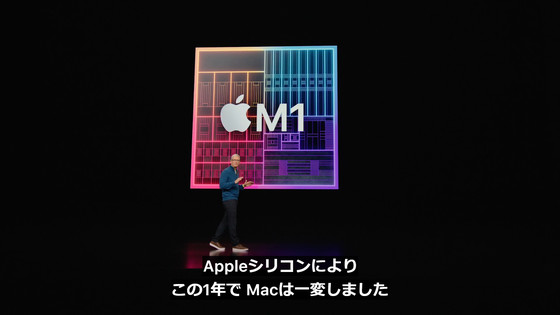
Almost all Mac lineups have been migrated to Apple Silicon.
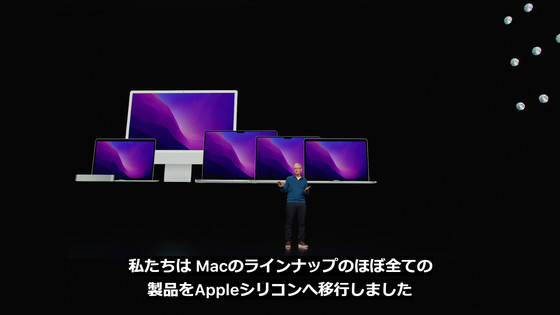
Since the start of shipping Macs with M1 chips, Apple's Mac division has grown above the industry average growth rate in all quarters.
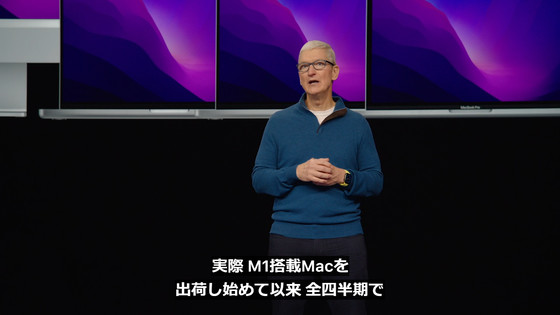
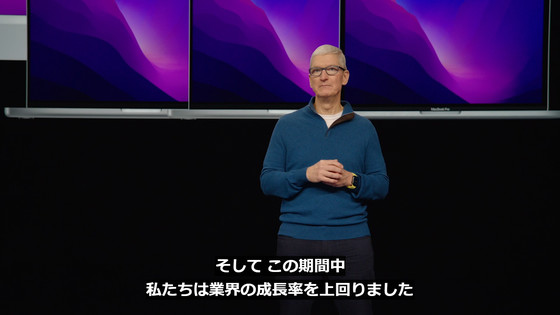
There are three models of M1 chip, M1, M1 Pro, and M1 Max ...
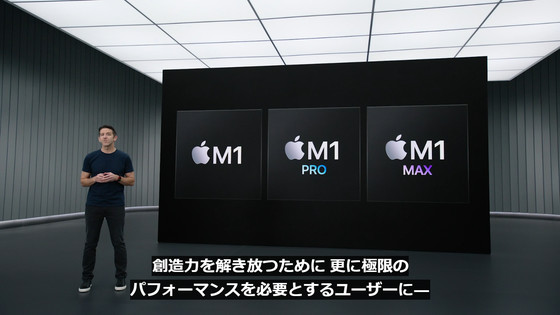
'M1 Ultra' will be newly added to this.
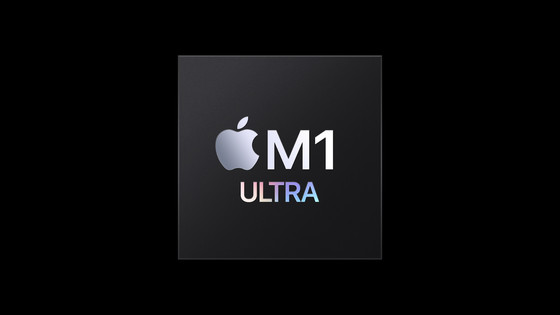
The die sizes of M1, M1 Pro, and M1 Max are as follows. As Apple evolved the M1 chip into the M1 Pro and M1 Max, the architecture has expanded.
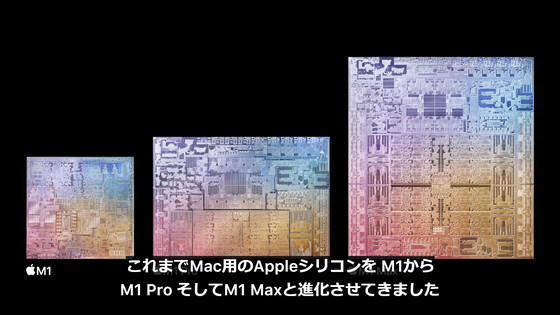

This is all about achieving incredible performance.

However, there were physical constraints on making a die larger than the M1 Max.

The mainstream approach to expanding the die size is to connect two chips via a motherboard ...
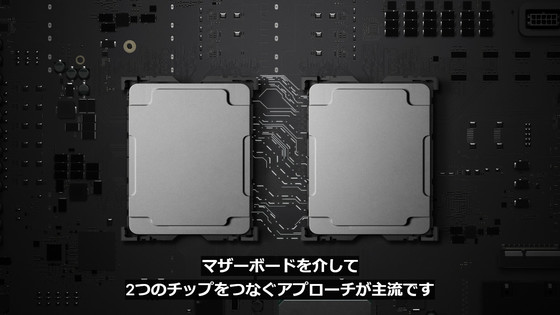
This method seems to come at a great cost.
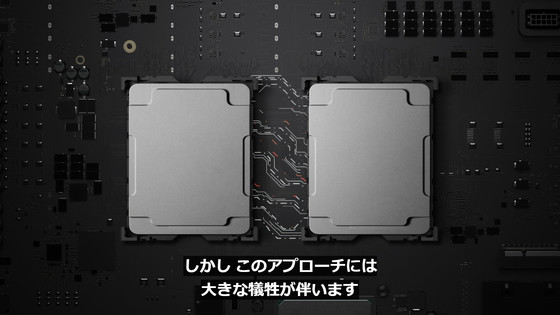
The sacrifices include 'increased delay,' 'decreased bandwidth,' and 'significant increase in power consumption.'

Therefore, M1 Ultra adopted an epoch-making approach instead of adopting the usual approach of 'connecting two chips via the motherboard'.

With a technology called 'Dai-to-Dai Interconnect' ...

Create M1 Ultra by connecting two M1 Max dies.
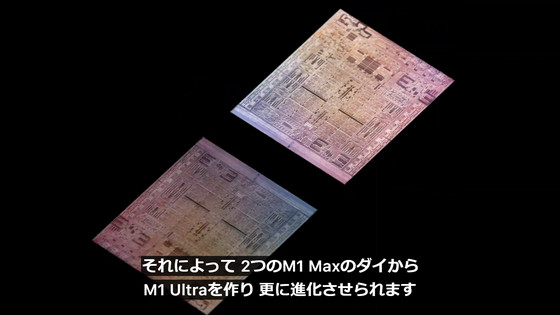
Apple calls this die-to-die technology 'Ultra Fusion.'

The UltraFusion architecture connects more than 10,000 signals, enabling ultra-fast data transfer of 2.5TB / s between the two dies.


This makes it possible to eliminate the 'increased delay,' 'decreased bandwidth,' and 'significant increase in power consumption' that occur when adopting the conventional approach of 'connecting two chips via a motherboard.'

The M1 Ultra has 114 billion transistors, seven times as much as the M1.
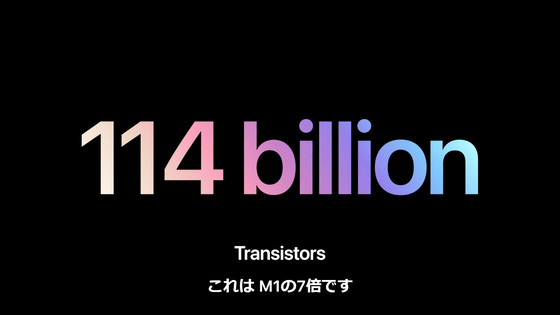
The following is a comparison of the die sizes of the M1 family. As you can see in the image, the die size of the M1 Ultra is twice that of the M1 Max.
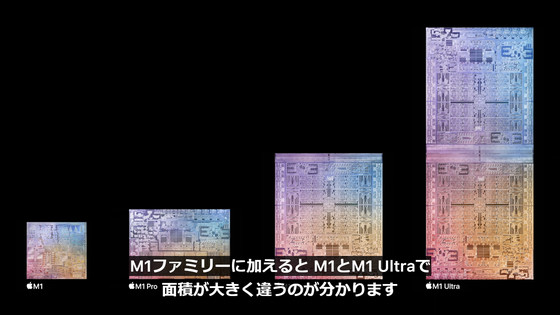
Memory bandwidth increased to 800GB / s.

Unified memory is up to 128GB

The CPU has 20 cores, 16 high-performance cores and 4 high-efficiency cores.

The GPU has 64 cores, and the GPU performance is about 8 times faster than the M1 chip.
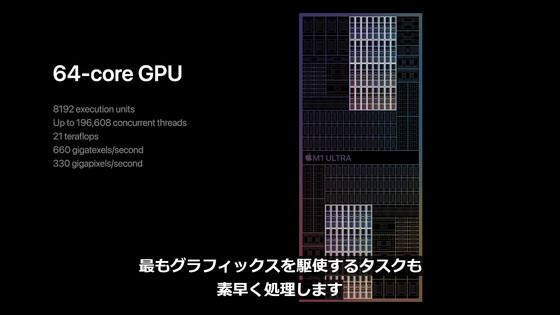

Neural Engine can process up to 22 trillion operations per second with 32 cores
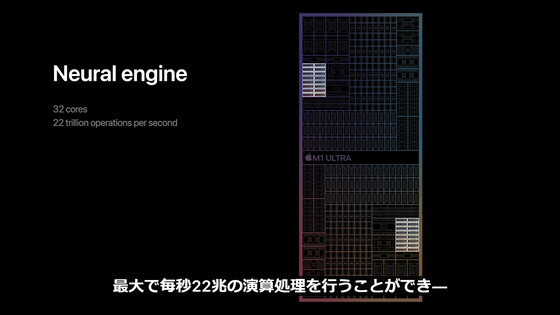
Media engine is twice as powerful as M1 Max ...

ProRes video encoding and decoding throughput is higher than ever.

M1 Max's performance per watt leads the industry ...

Multithreaded CPU performance can be achieved with 65% less power than a standard 10-core CPU.

The M1 Ultra delivers 90% better performance with the same amount of power than a standard 16-core CPU.
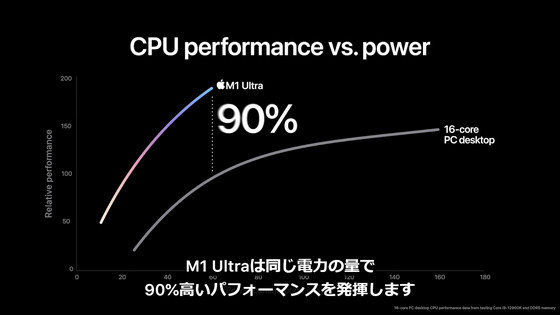
In addition, the M1 Ultra can deliver peak performance with as little as 100 watts of power.

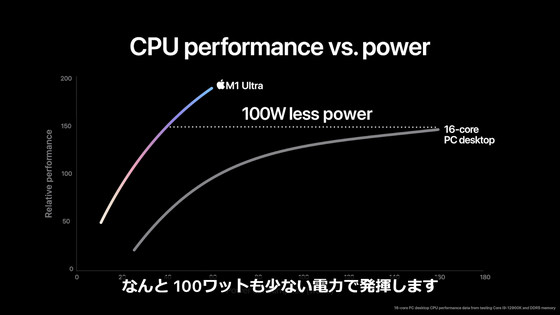
Compare GPU performance to standard discrete GPUs, you'll get comparable performance with one-third the power.
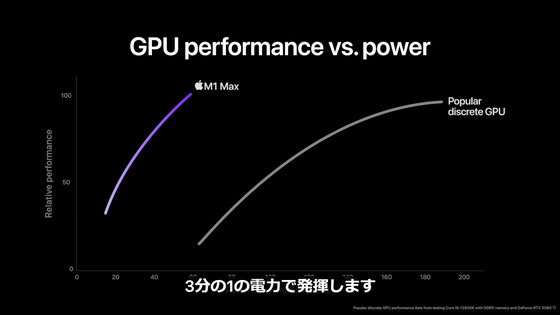
It is calculated that the power consumption is 200 watts less.
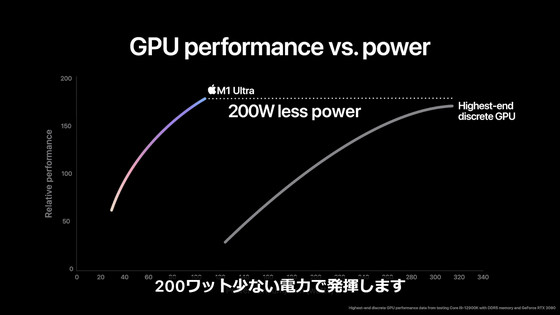
Below is an image that summarizes the features of the M1 Ultra.
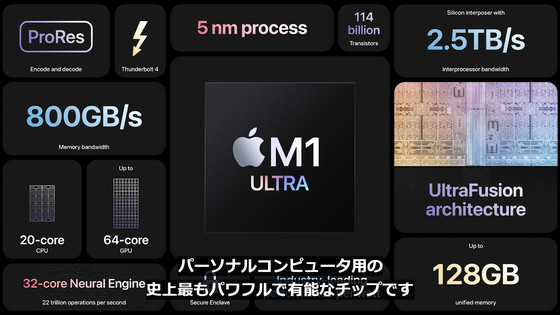
You can watch the movie that appeals to the M1 Ultra that was played at the announcement event from the following.
M1 Ultra | Changing the game | Apple --YouTube
Related Posts:
in Hardware, Posted by logu_ii





